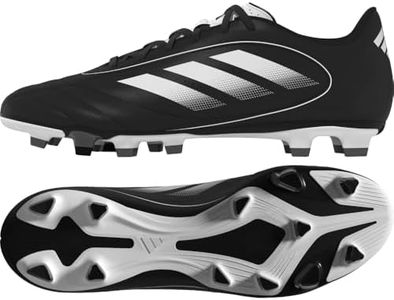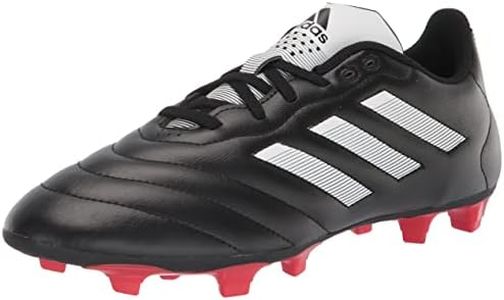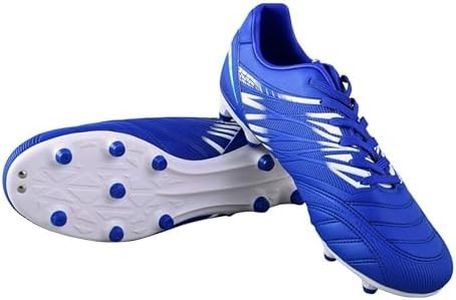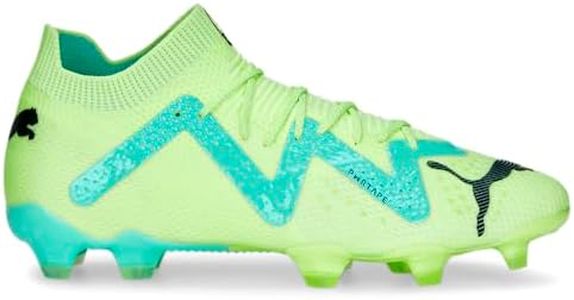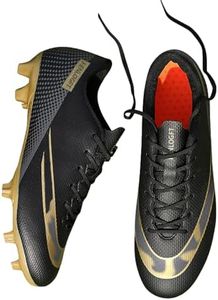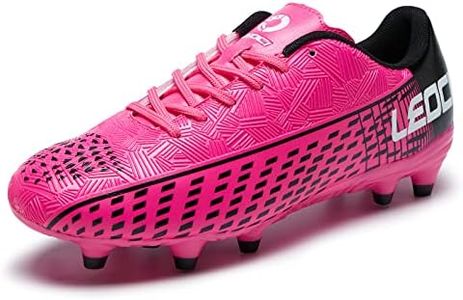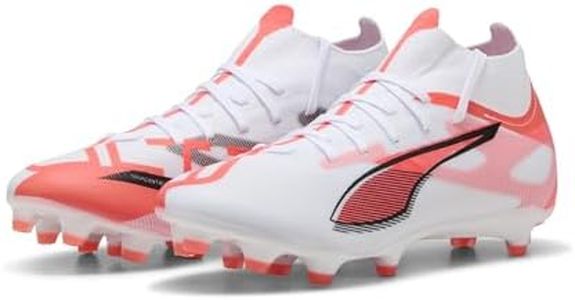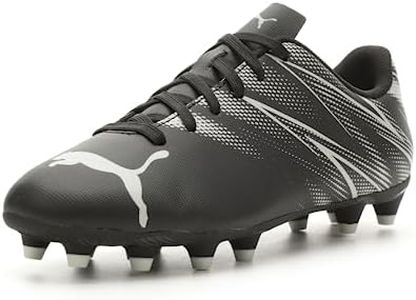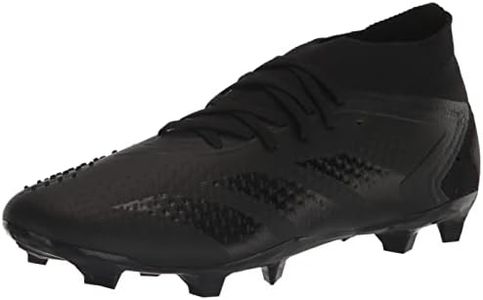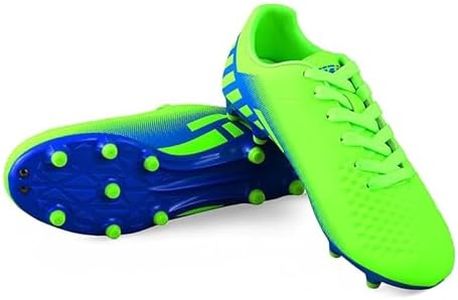We Use CookiesWe use cookies to enhance the security, performance,
functionality and for analytical and promotional activities. By continuing to browse this site you
are agreeing to our privacy policy
10 Best Womens Soccer Cleats
From leading brands and best sellers available on the web.Buying Guide for the Best Womens Soccer Cleats
Choosing the right women’s soccer cleats can make a significant difference in your comfort and performance on the field. The cleats you pick should match your playing style, position, the type of field you mostly play on, and your personal comfort. Try to focus on the features that directly influence how the cleats will feel and perform for you. Pay attention to how they fit, the grip and support they provide, and how they complement your playing habits. Before making a final decision, it’s always a good idea to try on different pairs, walk around in them, and see which ones feel best for your feet.Type of Ground (Outsole)This spec refers to the type of surface the cleats are designed for, such as firm ground (FG), soft ground (SG), artificial ground (AG), or indoor courts. It matters because using the wrong outsole can lead to poor traction or even injury. Firm ground cleats are most common and work for natural, dry grass fields. Soft ground cleats have longer, often detachable studs for wet and muddy fields. Artificial ground cleats are crafted for synthetic turf, and have special stud patterns for extra grip. Indoor cleats have flat, rubber soles for gym and hard court play. To pick the right type, consider where you play most—choose FG for most outdoor grass fields, AG for turf, and indoor if you’re mostly inside.
Fit and WidthFit describes how the cleat hugs your foot, while width is about the space your foot has inside the shoe. This impacts both comfort and performance, as a poorly fitting shoe can cause blisters or foot pain. Soccer cleats come in different widths and have varying levels of snugness. Some are made for narrow feet, and others for wide feet. When selecting, always try on cleats with your usual soccer socks and make sure they feel secure but not tight, with about a thumb’s width of space at the toe.
Material (Upper)The material or upper of the cleat affects flexibility, durability, touch on the ball, and even breathability. Uppers are often made from leather, synthetic materials, or a textile mesh. Leather, often softer, molds to your foot for a personalized fit and great touch, but can be heavier. Synthetic uppers are lighter, sometimes less breathable, and tend to keep their shape better. Textiles offer good breathability and lightness, but might not be as durable. If you prioritize ball feel and comfort, look for soft leather. For lighter weight and easier upkeep, consider synthetics.
Stud Pattern and LengthStuds or cleats on the bottom of the shoe provide grip on the playing surface. The layout and length of these studs changes your stability and maneuverability. Shorter studs are suitable for firm, dry ground, while longer studs are designed for wet or muddy conditions and offer deeper penetration for traction. Consider your usual field conditions: choose shorter, more numerous studs for firm or artificial ground and longer, sometimes fewer, studs for soft ground. The stud pattern can also affect cuts and quick movements, so lighter players or wingers may prefer configurations optimized for agility.
Weight of the CleatThis refers to how heavy or light the shoe feels on your foot. Weight impacts speed and stamina—lighter cleats make it easier to move quickly, while slightly heavier cleats sometimes provide more protection and durability. Cleat weight can range from very light (great for attackers who need speed) to more robust (better for defenders or anyone seeking more foot protection). Choose the weight that best matches your style: quick, agile players often prefer lighter shoes, while those in physically demanding positions might favor something a bit sturdier.
Ankle Support (Low vs. Mid/High Cut)Cleats come in low, mid, or high ankle designs. Low cuts allow more freedom of movement, which is preferred by most players for speed and agility. Mid or high cut cleats offer additional ankle support, which some players may want for stability or if they have a history of ankle issues. Think about your comfort and injury history—if you often cut and sprint or have no ankle problems, low cuts work well; if you want more support, consider mid or high tops.

